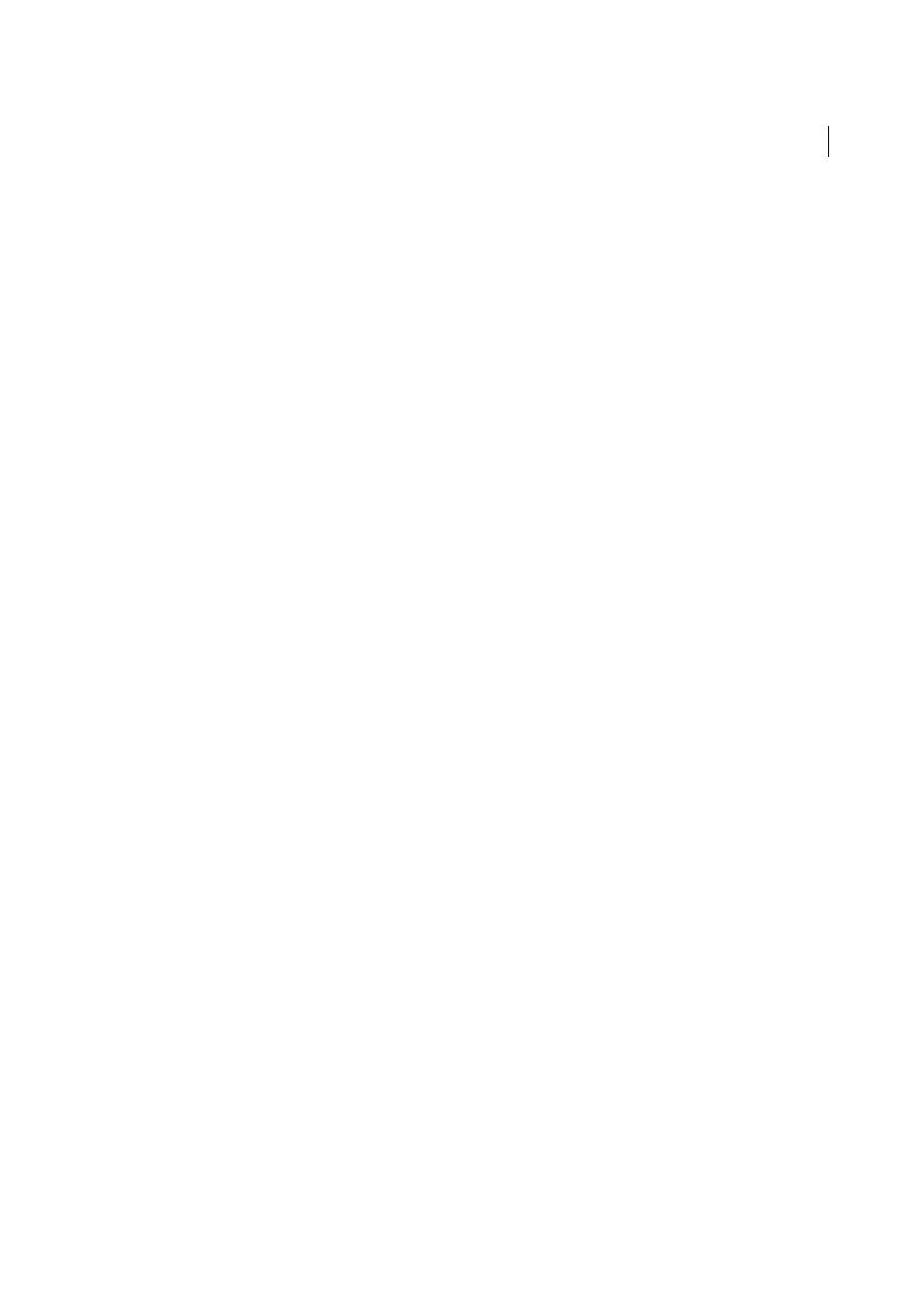Stylize effect (bottom of menu), Texture effects, Video effects – Adobe Illustrator CC 2015 User Manual
Page 451

446
Creating special effects
Last updated 6/5/2015
Note Paper
Creates an image that appears to be constructed of handmade paper. The effect simplifies an image, and
combines the effect of the Grain command (Texture submenu) with an embossed appearance. Dark areas of the image
appear as holes in the top layer of paper surrounded by white.
Photocopy
Simulates the effect of photocopying an image. Large areas of darkness tend to copy only around their
edges; midtones fall away to either solid black or white.
Plaster
Molds an image as if from plaster, and then colorizes the result using black and white. Dark areas are raised;
light areas are sunken.
Reticulation
Simulates the controlled shrinking and distorting of film emulsion to create an image that appears
clumped in the shadow areas and lightly grained in the highlights.
Stamp
Simplifies the image to appear stamped with a rubber or wood stamp. This command is best used with black-
and-white images.
Torn Edges
Reconstructs the image as ragged, torn pieces of paper, and then colorizes the image using black and white.
This command is useful for images consisting of text or high-contrast objects.
Water Paper
Uses blotchy daubs that appear painted onto fibrous, damp paper, causing the colors to flow and blend.
Stylize effect (bottom of menu)
The Glowing Edges effect is raster-based and uses the document’s raster effects settings whenever you apply the effect
to a vector graphic.
Glowing Edges
Identifies the edges of color and adds a neon-like glow to them.
Texture effects
The Texture effects are raster-based and use the document’s raster effects settings whenever you apply the effect to a
vector graphic.
Craquelure
Paints an image onto a high-relief plaster surface, producing a fine network of cracks that follow the
contours of the image. Use this effect to create an embossing effect with images that contain a broad range of color or
grayscale values.
Grain
Adds texture to an image by simulating different kinds of grain—regular, soft, sprinkles, clumped, contrasty,
enlarged, stippled, horizontal, vertical, or speckle. For more information on using these texturizing options, see
texture and glass surface controls
Mosaic Tiles
Draws the image as if it were made up of small chips or tiles and adds grout between the tiles. (In contrast,
the Pixelate > Mosaic command breaks up an image into blocks of different-colored pixels.)
Patchwork
Breaks up an image into squares filled with the predominant color in that area of the image. The effect
randomly reduces or increases the tile depth to replicate highlights and shadows.
Stained Glass
Repaints an image as single-colored adjacent cells outlined in the foreground color.
Texturizer
Applies a texture you select or create to an image.
Video effects
The Video effects are raster-based and use the document’s raster effects settings whenever you apply the effect to a
vector graphic.
De-Interlace
Smooths moving images captured on video by removing either the odd or even interlaced lines in a video
image. You can choose to replace the discarded lines by duplication or interpolation.
